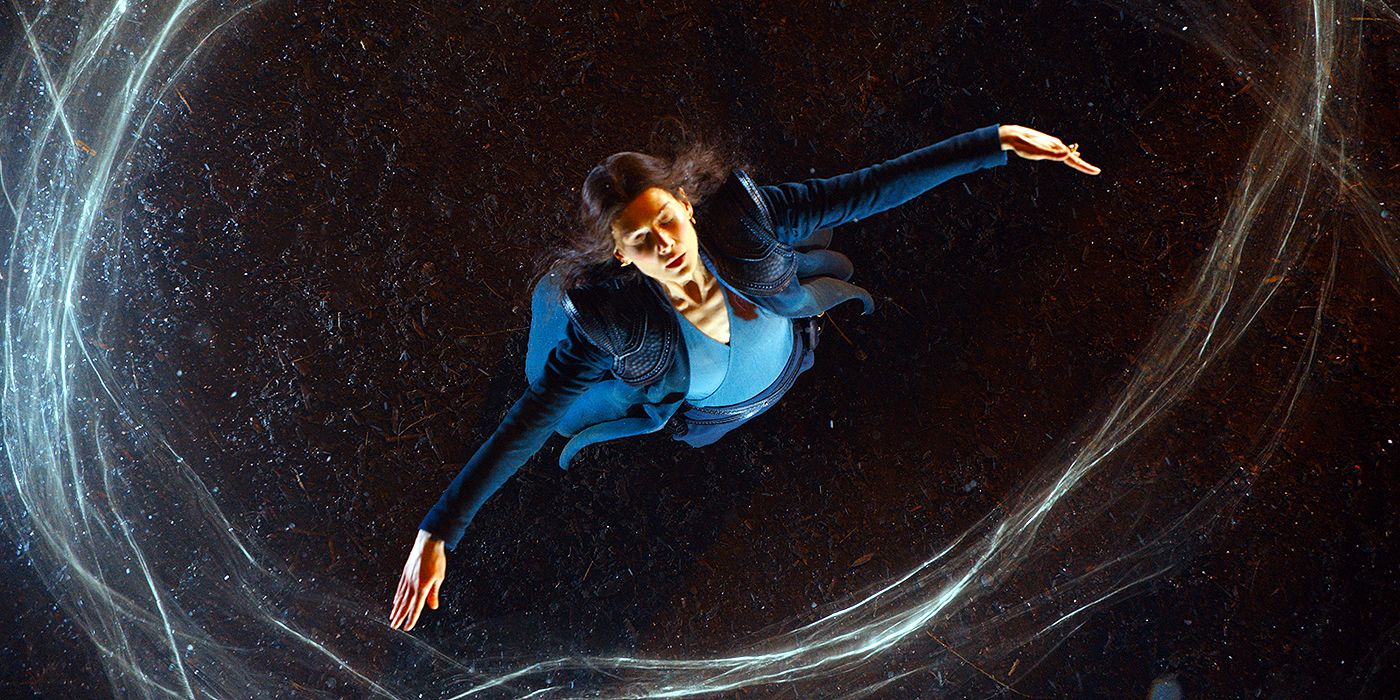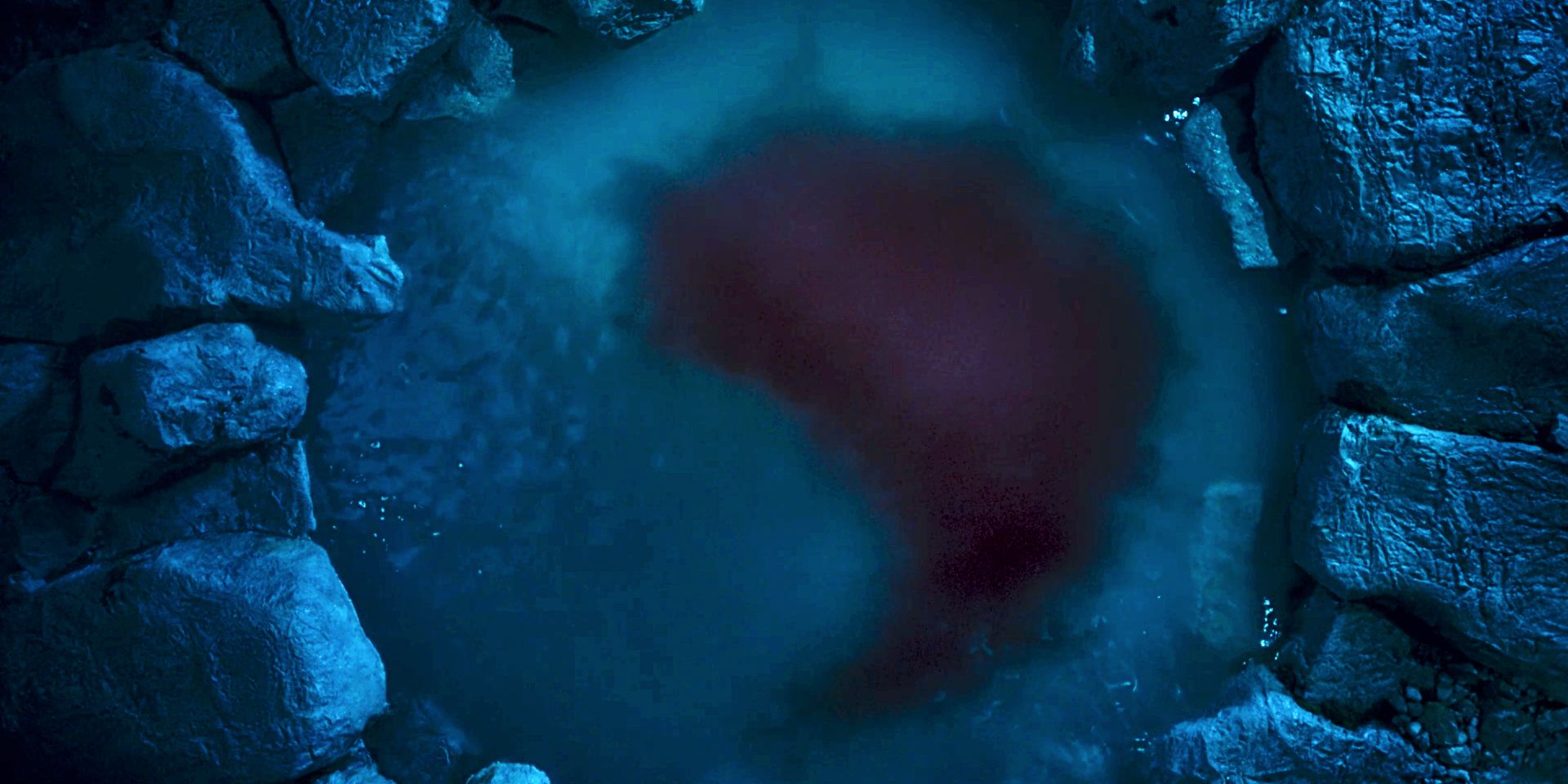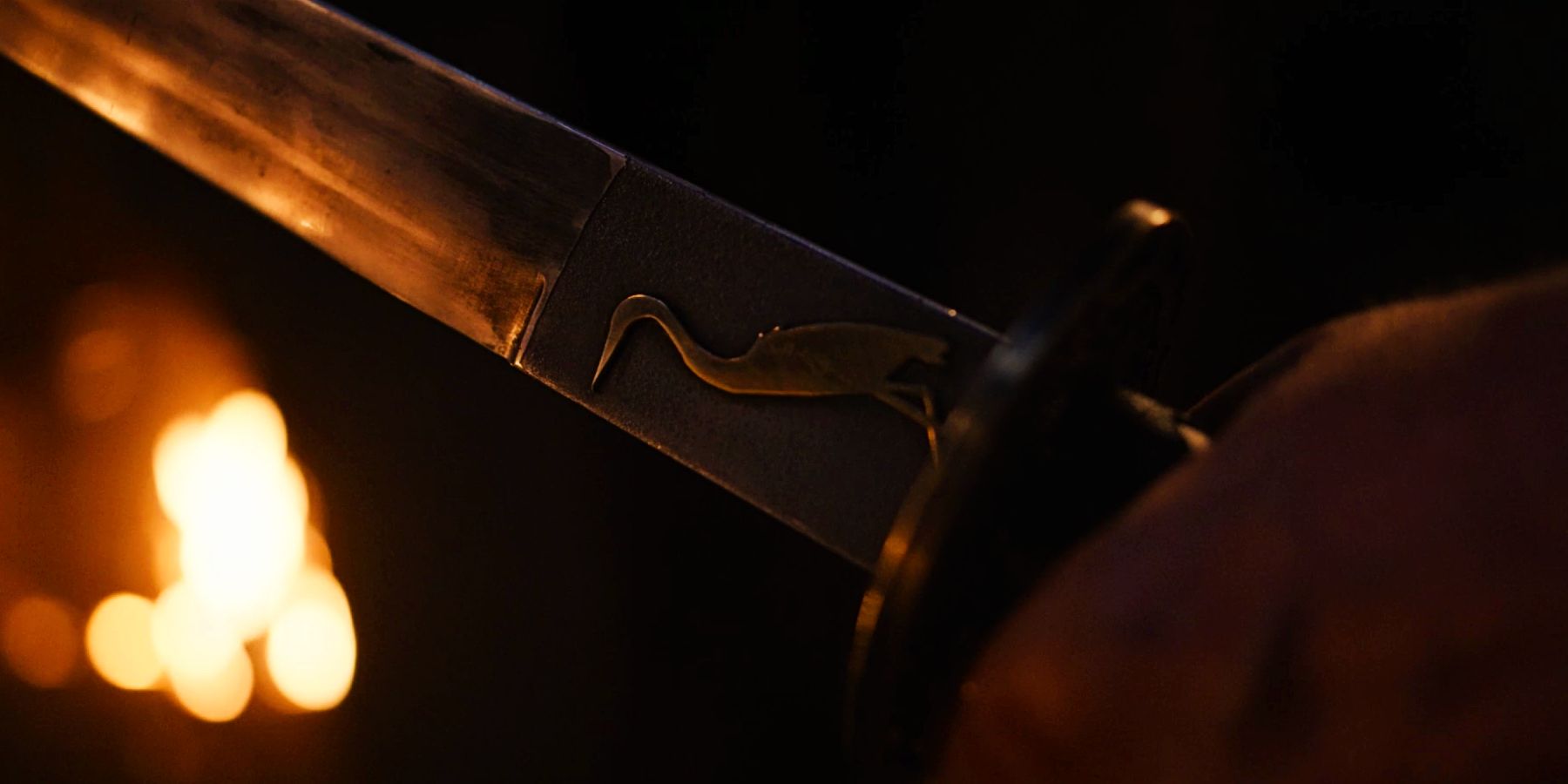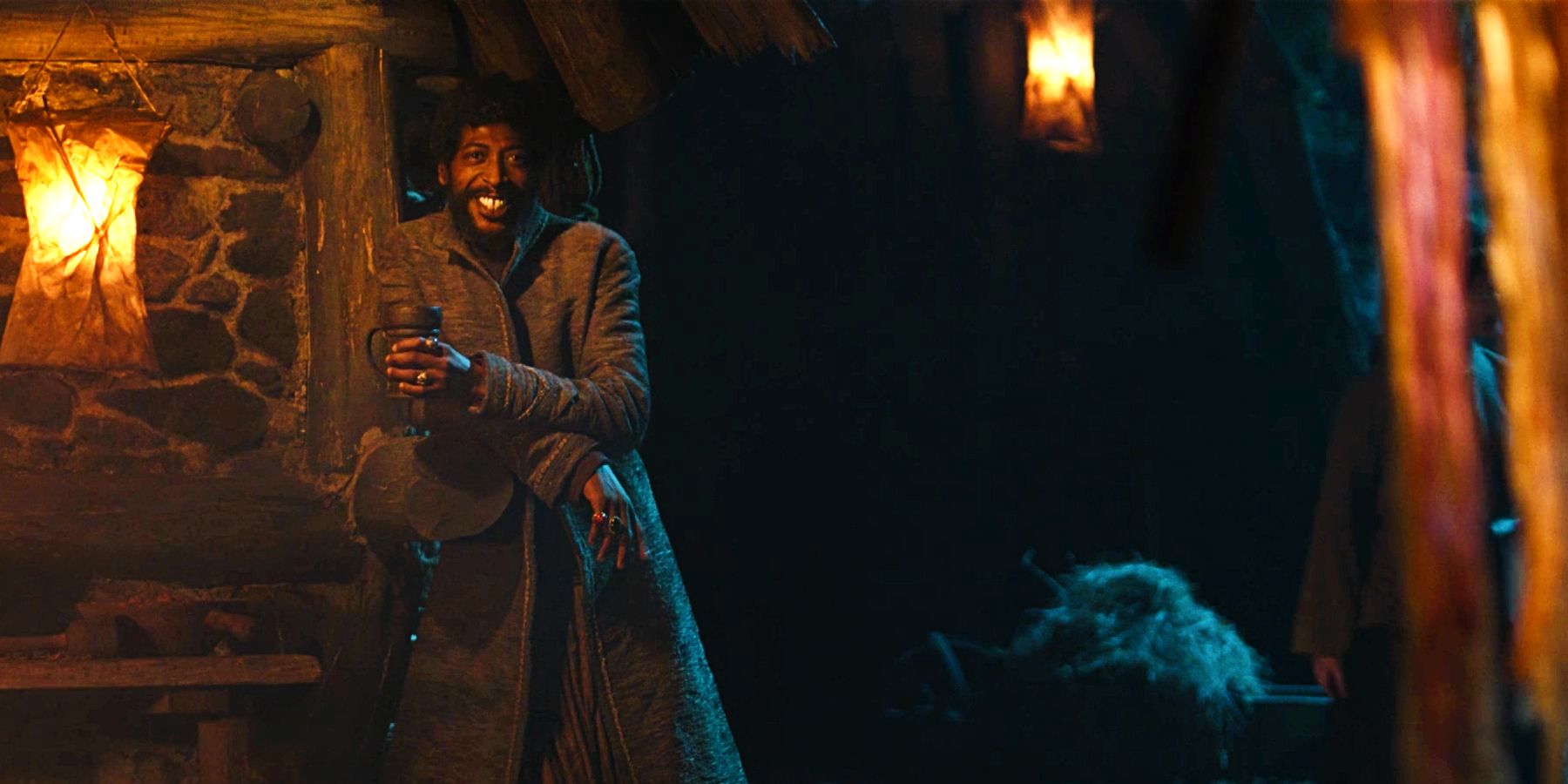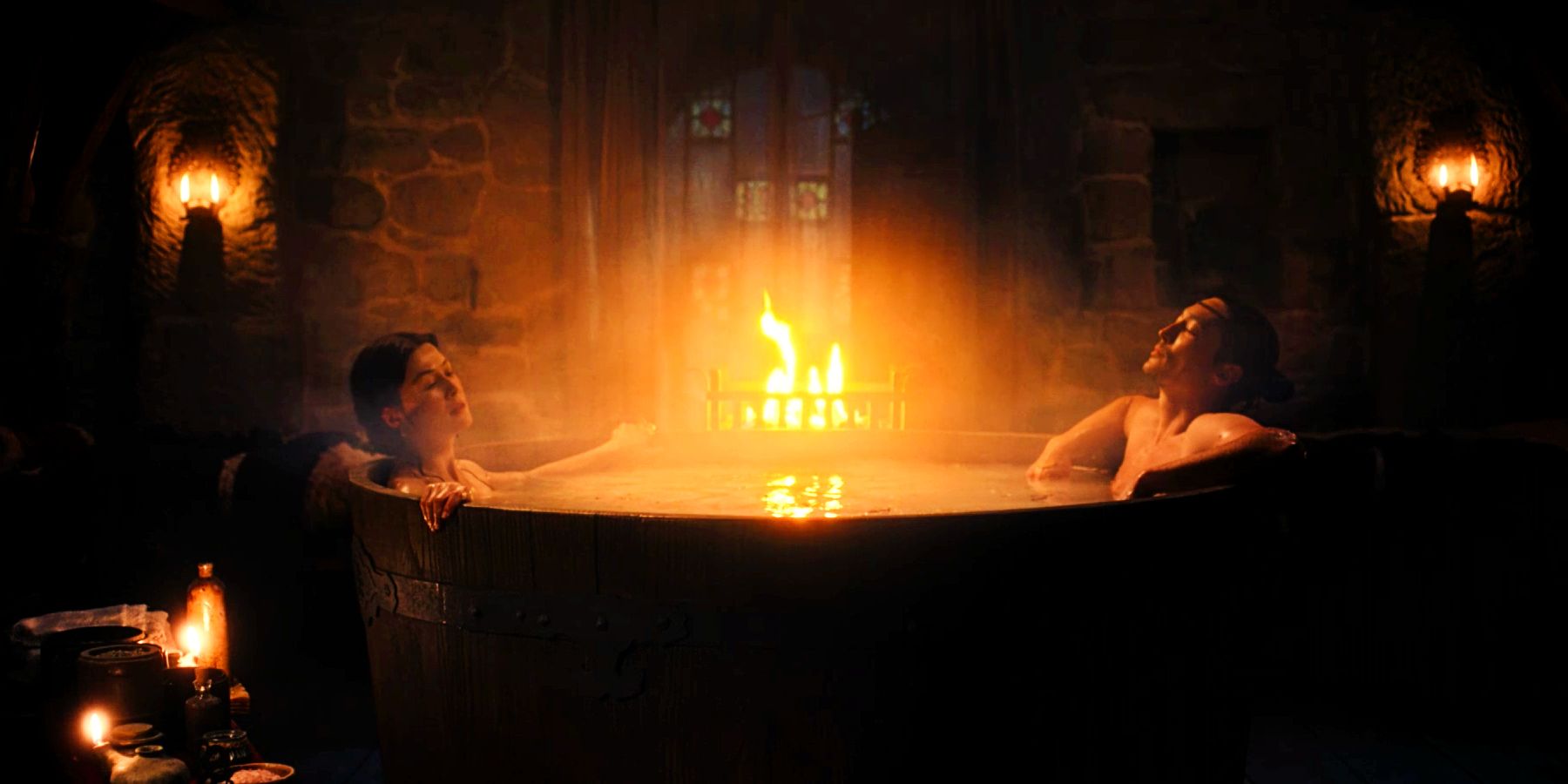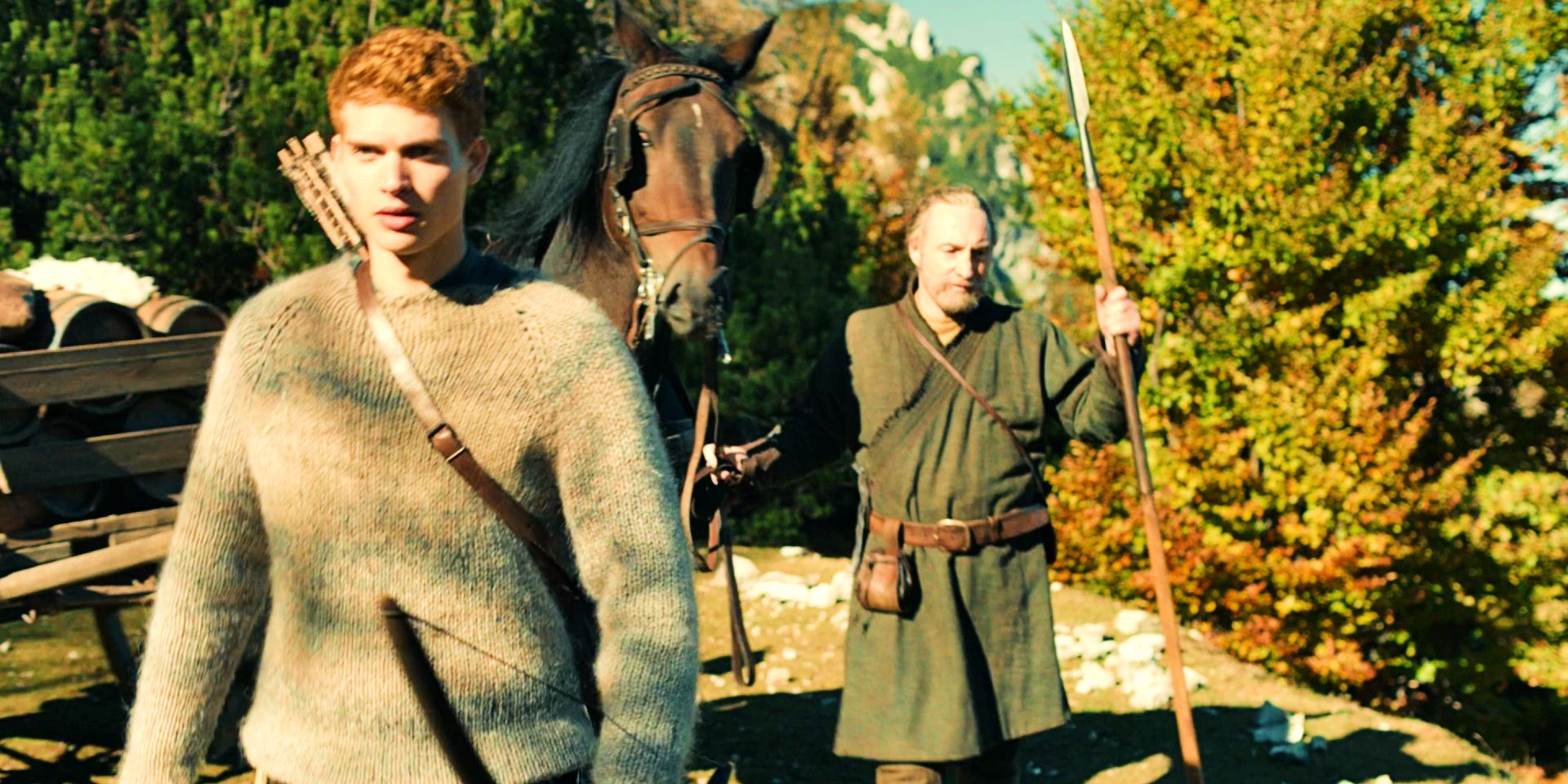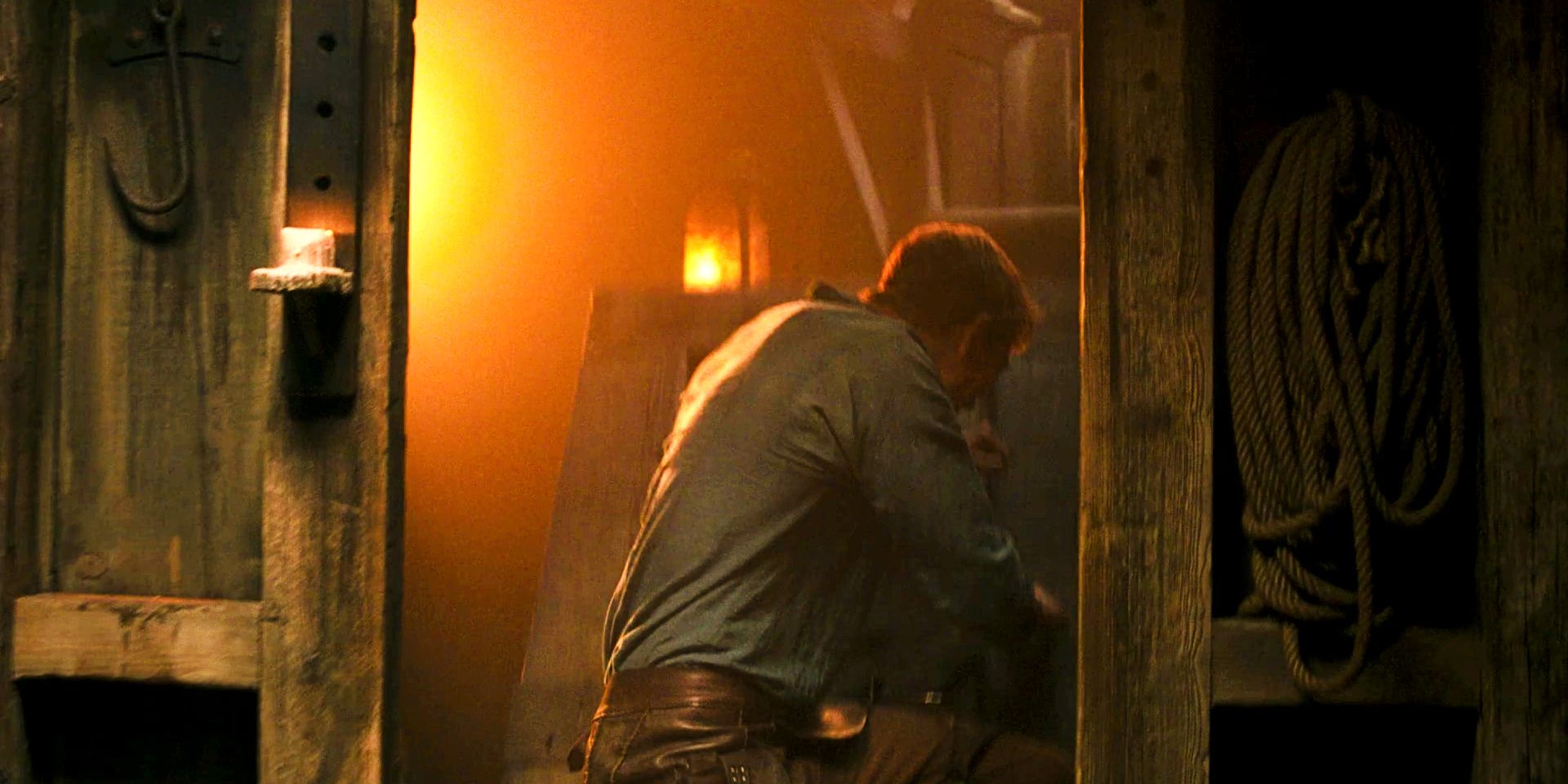WARNING: The following contains spoilers for the first three episodes of The Wheel of Time, streaming on Prime Video, and events that take place in the novels by Robert Jordan.
Robert Jordan's epic fantasy, The Wheel of Time, which takes place over 10,000 pages, hundreds of important characters and the final battle between good and evil, has arrived with a long-awaited adaptation from Amazon Studios. Although once considered unadaptable due to its immense scope, showrunner Rafe Judkins is undaunted in his approach to the material, and confident in the long-view decision making that may skew counter to the traditional expectations of prestige television.
It is far too earlier for either the studio or the fans to convey how much patience they will have for the tale, but in the first three episodes there are already visual and contextual seeds planted for the story that's to come. In some cases the references are expository or foreshadowing, and in others they are merely poignant visual cues to the source material. But it's clear the creators have remained faithful to the spirit of the books and here are a few examples that have been offered thus far.
The Ancient Symbol of the Aes Sedai
There was a time before the breaking of the world when men and women could both access the One Power safely and bend the five elements to their will, but they each touched a different side of the same Source. Saidar, symbolized as a white, curved tear, represents the feminine aspect of the source, and saidin, depicted as its black mirror image, is its masculine counterpart. The two abide together like puzzle pieces forming a sphere identical to yin and yang, but without the dot of contrasting color abiding in the fullness of its opposite. This was the symbol of the ancient Aes Sedai, but at the time the story takes place the Aes Sedai are only represented by saidar, and saidin has become a cursed sign denoting madness, evil and filth thanks to the taint bestowed upon it by the Dark One.
The mark of saidin appears once in the first episode as Lan surveys the encroaching Trolloc's butchery in the design of slaughtered lambs in the forest. The ancient symbol as a whole is cleverly revealed in Episode 3 as Nynaeve ambushes the Trolloc that has been stalking her, and their battle in the Women's Circle pool submerges them beneath its sacred waters. A blood plume blooms into the shape of saidin just before Nynaeve breaches the surface, hungry for her next breath. This scene may also have a significance for Nynaeve because part of her destiny is helping Rand to cleanse the foulness from saidin, allowing men to channel again without the fear of madness. There seems to be a synergy between these moments due to the significance of the purifying waters and her bursting through the center of this almost-forgotten image, the relic of a world without a festering wound from the Dark One.
Tam Al'Thor's Heron Marked Blade
Arc of the Moon, Tower of Morning and The Rose Unfolds are examples of sword forms, or stances leading into prescribed movement, one flowing seamlessly into the next in a ballet of death. Before the Time of Madness, a person who had devoted themselves to mastering the dozens of sword forms would be considered a blademaster, and such a person could then mark their swords with the heron sigil.
The show depicts the Trolloc attack on the Al'Thor home close to how events unfolded in the book, including that no one else of the Two Rivers owned a sword to use against the beasts as they descended on their homesteads. Tam Al'Thor, a former captain of an elite military unit, is one of only a dozen or so known blademasters alive. It sets the father in the mountains apart from his provincial neighbors who would never consider the need of a weapon that couldn't also be used as a tool. This moment not only provides a clue to Tam's skill but also signifies the aspirational context of Rand's possession of his father's blade now that he has left the Two Rivers behind.
Padan Fain's Causal Demeanor During the Trolloc Attack
As the villagers of Emond's Field flee for their lives, or else cower behind wooden doors ill-suited to withstand the brute force of Trollocs willed by a Fade, the peddler Padan Fain simply looks on before striding off into the night. Although the audience is introduced to Dana in Episode 3, "A Place of Safety," the first Darkfriend who makes an appearance onscreen is Padan Fain.
He had become a tool of the Dark One years ago, one of his Hounds tasked with finding the whereabouts of the Dragon Reborn. In his role as a roaming merchant, Fain was well-suited to collecting information across great distances unobtrusively and reporting this information back to his masters. After years of data collection, his superiors were convinced there was a certain group of young people in the Two Rivers who deserved some deadly attention, so Fain happily led them there in exchange for promised immortality.
The Wordless Conversations Between Moiraine and Lan
There are numerous moments throughout the first three episodes in which Lan and Moiraine appear to be communicating with one another with a mere gesture, body language or perhaps the simple intuitiveness that comes from two people who have shared an intimate bond over time. While pieces of that may hold true, the fullness of Moiraine and Lan's relationship has not been divulged.
Rand refers to Lan as Moiraine's errand boy but he is actually her Warder, a psionically bonded protector who is permanently tethered to the person who he is sworn to protect. Using an application of the One Power, a Warder bound to an Aes Sedai can feel their emotional state though they can't actually read each other's thoughts. Over time this creates a rapport that defies simple language and also provides benefits in complementary combat. Removing a bond is complicated and can result in the death of the severed Warder.
Rand Al'Thor's Reddish Hair
During the third episode, Thom Merrillin decided he couldn't stand idly by while a man unjustly killed remained caged, and went about burying him, while Mat had gone there to rob him. Thom tells Mat the man was killed because he was Aiel, something he could tell from a glance due to the color of his hair and the presence of his veil, just as he could identify Mat as citizens of the Two Rivers, based on similar aesthetic and linguistic clues.
In addition to it speaking to the depth's of Thom's worldly experiences, it also pinpoints the Aiel phenotype is exceedingly rare in the world outside of the Three Fold Land. Similar to Dune, and probably inspired by their Fremen, the Aiel are a hardy desert people and warriors without peer. Rand's hair is the same color as the dead caged man's though the lighting during the scene obscures the fact a touch so it isn't wildly obvious, but Rand is indeed directly descended from the Aiel, which opens up questions about Tam's secrets and Rand's future.
Rand Al'Thor's Strength
Dana the Darkfriend chides Rand for trying to escape from her elaborately laid trap. The door is made of Ironwood, and there simply is no chance of him breaking it down on his own, and yet he does. It's unclear whether he kept trying because he could feel it giving early on and simply didn't trust her, or perhaps something within him kindled and drove his actions, hurtling him toward escape out of adrenaline, and alternatively sourced, fueled desperation.
Though raised with simple desires in a home he never wanted to leave, Rand can channel and is descended from the Aiel and the door may have succumbed to either. In the books during a period of time when Moiraine and a contingent of others are trying to catch Rand but lag behind him by a few days or so she remarks that he may continue to outpace them because the Aiel are as faster or faster than horses. She describes it as genetic as opposed to a byproduct of their upbringing in the desolation of the Three Fold Land. By proxy perhaps his strength is also derived from his heritage in that respect, though it may be more likely that this was one of his first manifestations of the One Power growing within him as he makes his way to the White Tower, where they still men who can channel, or kill them.
KEEP READING: The Wheel of Time: How Hiding the Dragon Reborn Will Help the Show Stick Its Landing

